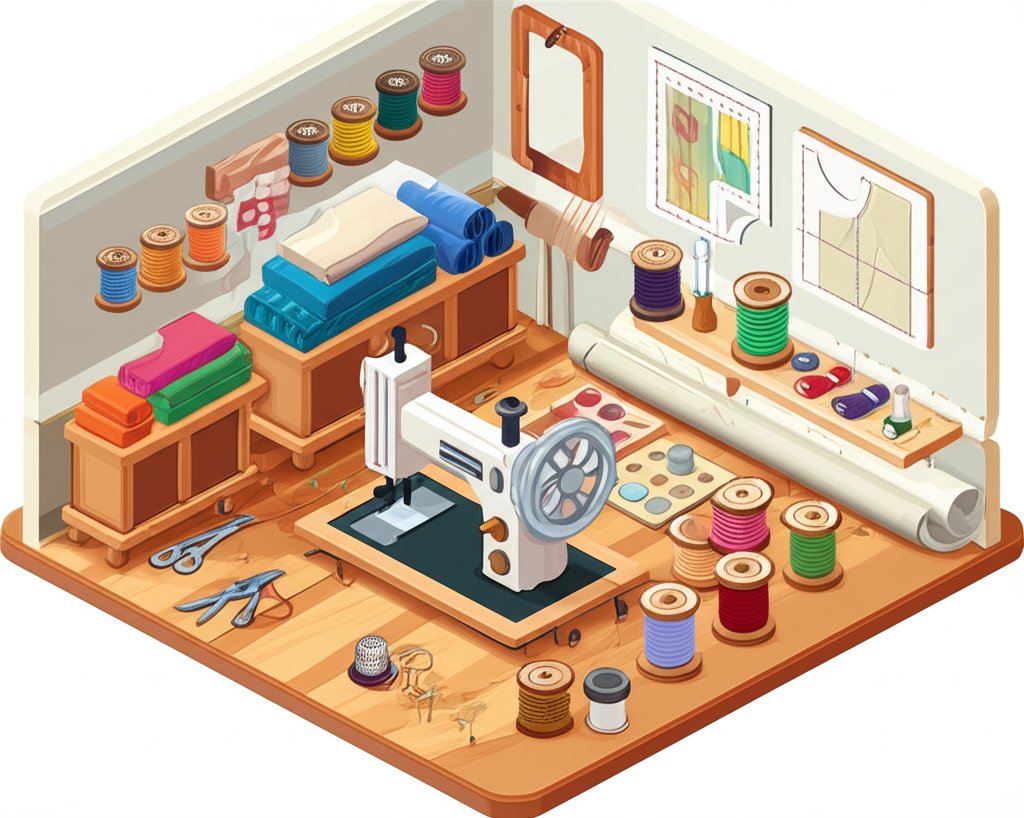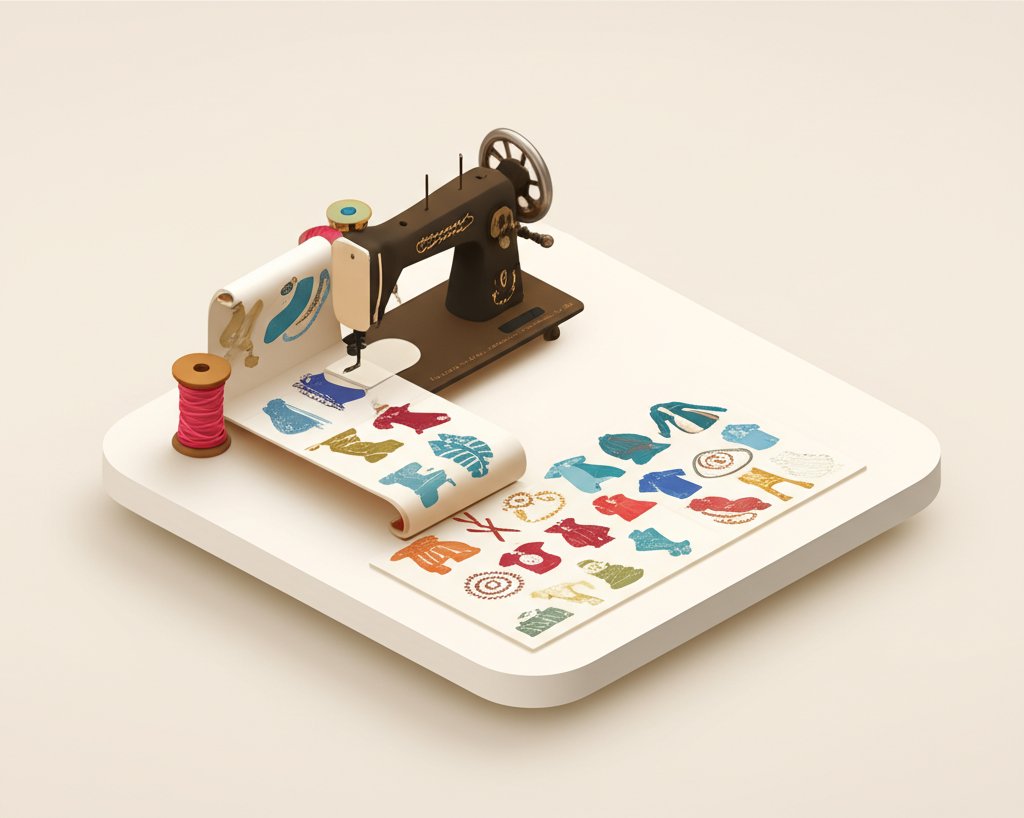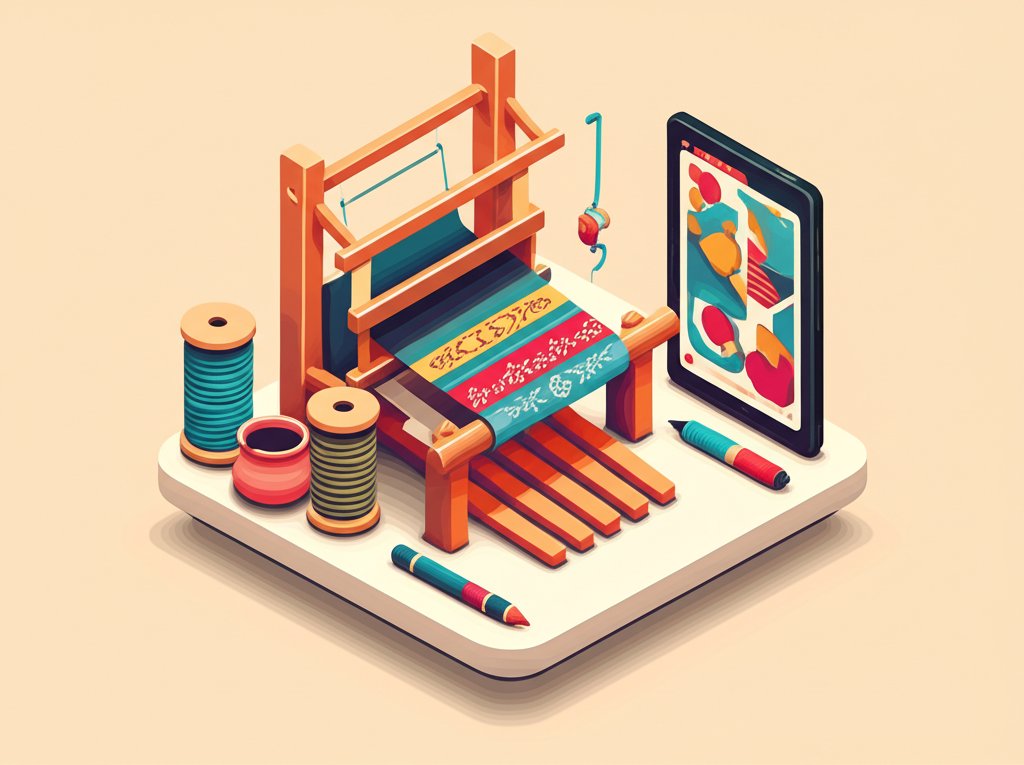From the ingenious survival tools of our earliest ancestors to the intricate designs gracing today’s runways, the sewing history is an epic tale of human innovation, artistic expression, and cultural intertwining. Every stitch tells a story, tracing the evolusi menjahit from a basic necessity to a sophisticated craft, making it a cornerstone of civilization itself. This comprehensive journey will unravel the profound sejarah menjahit, exploring how jahit menjahit has shaped societies, celebrated individuality, and evolved into the diverse seni menjahit we know today. Prepare to discover the pivotal moments, the groundbreaking technologies, and the enduring passion that has kept the needle and thread weaving through time.
The Dawn of Threads: Prehistoric Sewing (70,000 BCE – 3,500 BCE)
Long before written records, the origins of sewing history are etched into the caves and archaeological sites where early humans sought refuge from the elements. This foundational period highlights how jahit menjahit emerged as a critical survival skill.
The shift from draped skins to tailored garments, enabled by early jahit menjahit techniques, represents a significant moment in clothing history, further explored in this overview of dressmaking history.
Necessity as the Mother of Invention: Early Tools and Materials
The earliest evidence of sejarah menjahit points to an astonishing ingenuity born from primal needs. Around 70,000 to 40,000 years ago, during the Ice Age, our ancestors faced brutally cold climates. This challenge spurred the development of rudimentary sewing tools. Needles, crafted from bone, ivory, and antlers, were painstakingly sharpened and drilled to create an eye. These early “needles” would then be threaded with natural fibers like animal sinew (tendons), plant stalks, or strips of rawhide. The primary materials for clothing were animal hides and furs, which offered essential warmth and protection. The ability to join these materials together was a massive leap for early human comfort and survival.
Survival and Adaptation: First Garments and Shelters
The advent of jahit menjahit fundamentally transformed human existence. Instead of simply draping animal skins, early humans could now create tailored garments that offered superior insulation. Imagine the relief of a fitted tunic or pants compared to a loose hide! Beyond clothing, sewing enabled the construction of more robust shelters, such as tents made from stitched animal skins, providing better defense against harsh weather and predators. This period of evolusi menjahit laid the very groundwork for human expansion and settlement across diverse climates, demonstrating its profound impact as a life-saving skill.
Ancient Civilizations: Sewing as an Art and Status Symbol (3,500 BCE – 500 CE)
As human societies grew more complex, so did the craft of jahit menjahit. This era marked a significant shift in sewing history, moving beyond mere utility into the realm of social expression and seni menjahit.
The Rise of Finer Tools and Fabrics
The Bronze and Iron Ages brought new advancements. Around 300 BCE, metalworking breakthroughs in India led to the creation of steel needles. These were far stronger, sharper, and more durable than their bone predecessors, enabling finer, more intricate stitches. Concurrently, the development of agriculture and specialized crafts led to the cultivation of natural fibers like flax (for linen), cotton, and silk. Weaving techniques became more sophisticated, producing a wider array of fabrics with different textures and qualities. This diversification of materials and tools propelled the evolusi menjahit into new dimensions.
Embellishment and Expression: Egypt, Mesopotamia, India, and China
In ancient Egypt, sewing was essential for crafting the elegant linen garments worn by pharaohs and commoners alike. Surviving examples show intricate pleating and delicate seams. In Mesopotamia, elaborate woven textiles conveyed status. However, it was in regions like India and China where the seni menjahit truly began to flourish, especially through embroidery.
- India: Celebrated for its early advancements in dyeing and textile production, Indian artisans created richly embroidered fabrics, often adorned with precious metals and jewels, reflecting their spiritual beliefs and opulent lifestyles.
- China: The legendary Silk Road itself is a testament to Chinese mastery of sericulture (silk production) and highly refined sewing techniques. Imperial garments were breathtaking masterpieces of embroidery, featuring intricate dragon motifs, symbolic patterns, and vibrant colors, signifying power and wealth. The secrets of silk
jahit menjahitwere closely guarded, influencing luxury textiles globally.
Symbolic Threads: Status and Ritual
Throughout ancient Greece and Rome, sewing was integral to creating the iconic tunics, togas, and stolas that defined their attire. While simpler in construction than Eastern garments, the quality of fabric, the drape, and subtle embellishments still conveyed social standing. The sejarah menjahit in these cultures also intertwined with ritual, as specific garments were often prepared for religious ceremonies or rites of passage, imbued with symbolic meaning through their creation and adornment. Every piece of clothing, from the daily wear of a Roman citizen to the ceremonial robes of an Egyptian priest, was a product of meticulous jahit menjahit, reflecting a society’s values and hierarchy.
Medieval and Renaissance Eras: Craft, Guilds, and Innovation (500 CE – 1700 CE)
The evolusi menjahit continued its steady march through the Middle Ages and burst into vibrant new forms during the Renaissance, transforming from household chore to a recognized trade and high art.
Medieval Tailoring and the Rise of Guilds
In medieval Europe, jahit menjahit became increasingly specialized. The demand for fitted clothing led to the emergence of professional tailors. These artisans often formed guilds, which regulated quality, protected trade secrets, and provided training. The guild system was crucial in standardizing techniques and ensuring a high level of craftsmanship. Garments evolved from simple tunics to more complex designs like doublets, gowns, and fitted hose, requiring precise cutting and intricate jahit menjahit. This period saw the first documented use of patterns, allowing for greater consistency and more elaborate designs in sewing history.
The Spinning Wheel Revolution
A pivotal moment in sejarah menjahit and textile production occurred in Europe during the 12th and 13th centuries with the invention of the spinning wheel. Prior to this, fibers were spun by hand, a slow and laborious process. The spinning wheel dramatically increased the efficiency of yarn production, turning raw fibers into thread much faster. This innovation led to an abundance of textiles, making fabric more accessible and fueling a boom in jahit menjahit activity. More cloth meant more clothing, more elaborate designs, and a greater opportunity for artisans to hone their seni menjahit. This technological leap laid a crucial foundation for the later Industrial Revolution.
Renaissance Opulence: The Pinnacle of Seni Menjahit
The Renaissance, an era of artistic rebirth and lavish displays, saw the seni menjahit reach unprecedented heights. Elaborate embroidery became a prominent feature of aristocratic fashion. Gold and silver threads, pearls, and precious stones were incorporated into garments, tapestries, and household linens. The intricate needlework was not merely decoration; it was a powerful symbol of wealth, status, and refined taste. From the opulent gowns of Elizabethan England to the richly decorated ecclesiastical vestments, jahit menjahit during this period was a true art form, showcasing incredible skill and creativity. European fashion, heavily influenced by this luxurious seni menjahit, demonstrated a strong sewing history of exquisite craftsmanship.
The Industrial Revolution: A Stitch in Time (1700s – Early 1900s)
The 18th and 19th centuries witnessed a dramatic acceleration in the evolusi menjahit with the advent of mechanization, transforming jahit menjahit from a largely manual craft into an industrial process.
Precursors to Mechanization: Early Attempts at Sewing Machines
The increasing demand for clothing, driven by growing populations and shifting fashion trends, spurred inventors to seek mechanical solutions for jahit menjahit. Though often forgotten, numerous individuals experimented with sewing machine designs before they became commercially viable. The first widely credited prototype of a sewing machine was conceived by Thomas Saint of England in 1790. His design, though never widely marketed or manufactured during his lifetime, featured a chain stitch and was intended for leatherwork. Subsequent inventors in France and the United States continued to refine the concept, facing significant challenges and resistance from hand-sewers.
The Birth of the Modern Sewing Machine
The actual breakthrough in sewing history that revolutionized the industry came in the mid-19th century. Barthélemy Thimonnier in France developed a machine in 1830 that could create chain stitches, leading to the world’s first machine-made garments. However, it was Elias Howe’s lockstitch machine, patented in 1846 in the United States, that truly laid the groundwork for modern sewing. Howe’s innovation of a needle with an eye at the point, combined with a shuttle mechanism, created a durable stitch. Isaac Singer further refined the sewing machine, making it more practical for home use and mass production, and, crucially, establishing a robust marketing and distribution network that popularized the device globally. This period marked a monumental shift in sejarah menjahit.
Mass Production and the Democratization of Fashion
The widespread adoption of the sewing machine led to the industrialization of the garment industry. Factories emerged, equipped with rows of machines, capable of producing clothing at an unprecedented scale and speed. This transformation drastically reduced the cost of clothing, making fashionable garments accessible to the general populace, not just the wealthy. The jahit menjahit process, once a time-consuming domestic chore for many, became a factory job. The ready-to-wear industry blossomed, fundamentally changing how people acquired their clothes and democratizing fashion. This was a profound moment in the evolusi menjahit, changing global economies and social norms.
The Modern Era: From Home Craft to High Fashion (1900s – Present)

The 20th and 21st centuries have seen jahit menjahit continue its incredible adaptability, thriving in both the intimate world of home crafting and the dazzling spectacle of haute couture. The sewing history of this period is marked by innovation and a renewed appreciation for the craft.
Home Sewing Resurgence and DIY Culture
Despite the dominance of ready-to-wear clothing, the mid-20th century saw a significant resurgence in home jahit menjahit. Pattern companies flourished, offering stylish designs that allowed individuals to create their own unique wardrobes, often at a fraction of the cost. Sewing machines became staples in many households, evolving from purely mechanical to electric and then computerized, offering a multitude of stitches and features. This DIY culture allowed for personal expression and creativity, keeping the seni menjahit alive in homes around the world. In recent times, a renewed interest in sustainable fashion and handmade goods has further fueled the home sewing movement, with enthusiasts embracing jahit menjahit for repairs, upcycling, and custom creations.
Seni Menjahit in Haute Couture and Avant-Garde Design
While mass production revolutionized everyday wear, the seni menjahit continued to thrive at its highest echelons: haute couture. Legendary fashion houses and designers, like Coco Chanel, Christian Dior, and Alexander McQueen, continued to push the boundaries of design, using intricate jahit menjahit techniques, exquisite materials, and meticulous handwork to create breathtaking garments. In this realm, sewing is not just about functionality; it is about artistry, sculptural form, and visionary expression. The precision and creativity involved in these pieces highlight that sejarah menjahit is as much about art as it is about utility. Avant-garde designers often employ innovative evolusi menjahit techniques, challenging traditional notions of garment construction.
Sustainable Sewing and Technological Advancements
Today, the evolusi menjahit is influenced by concerns for sustainability and new technologies. Digital pattern making, 3D printing for fabric embellishments, and laser cutting are changing production methods. Meanwhile, there’s a growing movement towards slow fashion, promoting mindful consumption, repair, and upcycling—all activities deeply rooted in jahit menjahit. The seni menjahit is also finding new expressions through textile art, quilting, and wearable technology, where embedded electronics are integrated into garments. This blend of tradition and innovation ensures that sejarah menjahit continues to be written, adapting to new challenges and creative possibilities.
The Enduring Legacy of Jahit Menjahit
The journey through sewing history reveals a craft that is far more than just putting fabric together. It is a fundamental aspect of human development, a canvas for cultural identity, and a timeless skill.
Cultural Significance Across Continents
Throughout the centuries, jahit menjahit has served as a powerful medium for cultural expression. From the vibrant patterns of African textiles, each telling a story, to the intricate kimonos of Japan, reflecting centuries of tradition, and the embroidered folk costumes of Eastern Europe, sewing has been instrumental in preserving heritage and celebrating diversity. The sejarah menjahit of each region is a unique thread in the global tapestry of human creativity, demonstrating how local materials, techniques, and beliefs shaped distinct forms of seni menjahit.
Skill, Art, and Therapy
Beyond its practical applications, jahit menjahit offers numerous personal benefits. It hones fine motor skills, encourages patience, problem-solving, and fosters creativity. For many, it is a meditative and therapeutic activity, offering a sense of accomplishment and a tangible connection to craftsmanship in an increasingly digital world. Whether it’s a simple mending job, a complex cosplay costume, or a bespoke designer gown, the act of jahit menjahit continues to engage, inspire, and connect individuals to a rich and vibrant tradition. The seni menjahit truly encompasses both the tangible and intangible rewards of creation.
Conclusion: Weaving Our Future with Ancient Threads
The sejarah menjahit is an extraordinary testament to human ingenuity and enduring creativity. From bone needles painstakingly stitching hides in prehistoric caves to the precision of modern industrial machines and the exquisite handwork of haute couture, jahit menjahit has traversed millennia, constantly adapting and enriching human life. The evolusi menjahit has shaped our clothing, our homes, our economies, and our very expressions of self.
As we look to the future, the sewing history reminds us that this ancient craft remains profoundly relevant. Whether driven by a passion for seni menjahit, a commitment to sustainable living, or simply the joy of creating something by hand, the needle and thread continue to weave stories, connect cultures, and empower individuals. Embrace the rich legacy of jahit menjahit and perhaps even pick up a needle yourself – you’ll be participating in an epic craft that celebrates ingenuity and artistry across countless generations.
FAQ

Q1: When and where did sejarah menjahit first begin?
A1: The earliest evidence of sejarah menjahit dates back approximately 70,000 to 40,000 years ago during the Ice Age. Early humans in regions like Siberia and parts of Europe used bone, ivory, and antler needles with animal sinew to stitch together animal hides for clothing and shelter to combat cold climates.
Q2: How did the invention of metal needles impact sewing history?
A2: The development of steel sewing needles in India around 300 BCE was a significant milestone in sewing history. Stronger and sharper than bone needles, they enabled much finer, more intricate stitches, propelling jahit menjahit from a basic survival skill to a sophisticated seni menjahit capable of detailed embellishment and cultural expression.
Q3: What role did the spinning wheel play in the evolusi menjahit?
A3: The spinning wheel, invented in Europe around the 12th-13th centuries, revolutionized textile production by drastically increasing the efficiency of yarn creation. This abundance of thread made fabric more accessible and affordable, fueling a surge in jahit menjahit activities and significantly contributing to the evolusi menjahit that paved the way for the Industrial Revolution.
Q4: Who invented the first modern sewing machine, and how did it change jahit menjahit?
A4: Thomas Saint patented an early sewing machine prototype in 1790, but it was Elias Howe’s lockstitch machine (1846) and Isaac Singer’s subsequent improvements that led to the first widely successful modern sewing machines. These inventions industrialized jahit menjahit, enabling mass production of clothing, reducing costs, and making fashionable garments accessible to a broader population, fundamentally transforming sewing history and the global textile industry.
Q5: In what ways does seni menjahit continue to be relevant today?
A5: The seni menjahit remains highly relevant today in various forms. It is central to haute couture and fashion design, allows for personal expression through home sewing and DIY culture, supports sustainable fashion practices like mending and upcycling, and thrives as a therapeutic hobby and textile art form. This enduring relevance showcases the continuous evolusi menjahit as both a practical skill and a creative outlet.
Q6: What does jahit menjahit mean in a broader cultural context?
A6: Jahit menjahit (the act of sewing) transcends its functional purpose to become a vibrant expression of cultural identity and heritage. From traditional garments and ceremonial wear to intricate embroidery and textile art, sewing has been used across diverse communities globally to tell stories, convey status, celebrate traditions, and express artistic vision, making it a crucial element in the sejarah menjahit of humanity.










